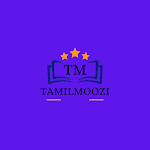Introduction
We live in the age of InformationTechnology. The mobile phones have literally put the world on our finger tips. The all-encompassing knowledge that we possess now, which has helped in the development ofpowerful technology, did not emerge all of a
sudden. The foundation of our modern life was facilitated by the development of the process of cognition among the human ancestors in the
prehistoric age.Prehistoric people were the pioneers of creative knowledge. From the artefacts and the languages they developed, we are able to
understand how intelligent they were.
Origin of the Earth and the Geological Ages
The history of humans is closely related to the history of the earth. The
earth contains geological,archaeological and biological records of historical times
in its upper layers. They are important for reconstructing the history of the
earth and various living organisms. The fossil bones of the human ancestors are embedded in the earth’s layers.
Palaeoanthropologists and archaeologists excavate the soil and rock layers on the
earth and extract evidence about human ancestors. These layers and the fossils are
scientifically dated to study the various stages in human evolution and prehistory.
Through the gathered evidence, they attempt to understand the evolution of human history and developments in a chronological order. Archaeology is the study of human past through the analysis and interpretation of material remains.
Palaeoanthropology is the study of the human ancestors and their evolution by the study of the fossil remains.The earth was formed approximately 4.54 billion years ago. Gradually, conditions emerged for the growth of organisms. Then
plants and animals came into being, and thereby foundation was laid for the evolution of humans. The long span of time in thehistory of earth is divided into eras, periodsand epochs by the geologists
1 billion = 100 crore
1 million = 10 lakh
Australopithecines were the apes from which
modern humans evolved. Now they are extinct,
but they are considered to be the close relatives
of humans.
9th Social First Mid Term Exam Original Question Paper TM Tiruvannamalai District 2023 pdf DOWNLOAD
Human Enquiries into the Past and Origin of the World The Age of Speculation
BC = (BCE) – Before Common Era
AD = (CE) - Common Era
MYA – Million years ago
Scientific Foundations of Geology, Biology and Archaeology
The beginning of history writing can be traced to the ancient Greeks. Herodotus
(484–425 BC (BCE)) is considered the Father of History, because the history he wrote was humanistic and rationalistic.The rise of scientific enquiry into the origin of humans was possiblebecause of The interest in collection of archaeological
remains and the opening of museums after the Renaissance Movement; The development of ideas of stratigraphyand geology;Darwin’s theory of biological evolution; The discovery of human and animal fossils, stone tools, and artefacts of early civilizations; and The ability to decipher early scripts.Stratigraphy – The study of origin, nature and relationships of rock and soil layers that were formed due to natural and cultural activities.
Oldest Museum – The museum of Ennigaldi-Nanna in Mesopotamia was established in 530 BC (BCE). The Princess Ennigaldi was the daughter of the neo-Babylonian king Nabonidus. The Capitoline Museum in Italy is perhaps the oldest surviving museum (1471AD (CE)) at present. Ashmolean Museum at Oxford University is the oldest university museum in the world. It was established in
1677 AD (CE).Herbert Spencer’s (1820–1903 AD (CE))biological evolution, and Charles Darwin’s(1809–1882 AD (CE)) theory on concepts of natural selection and survival of the fittest contributed to the scientific understanding of
human origins. Charles Darwin published the books On the Origin of Species in 1859 and The Descent of Man in 1871.
Natural selection – The process by which organisms that are better adapted to their environment would survive and produce more offspring.
Survival of the fittest means “survival of the form that will leave the most copies of itself insuccessive generations.”
Fossil – Prehistoric animal or plant that turns into stone over a period of time (millions of years) because of chemical and physical processes. Animal bones are preserved due to mineralization. Palaeontology is the study
of fossils.
Human Evolution and Migration
The chimpanzee, gorillas and orangutans,along with humans, are collectively called the Great Apes. Among them, the chimpanzee is genetically the closest to humans.
The ancestors to humans were called Hominins, and their origins have been traced
in Africa. They evolved from those origins and then began to move to other parts of the world in due course of time. The Hominins emerged around 7 to 5 million years ago.Skeletons of Australopithecus, one of the early species of this tribe, have been found inAfrica.The Great Rift Valley in Africa has many sites that have evidence for the prehistoric period.
Earliest Lithic Assemblages of Human Ancestors
The earliest tools made by human ancestors are found in Lomekwi in Kenya.
They are dated to 3.3 million years. Oldowan tools occur in the Olduvai gorge in Africa.They are 2 to 2.6 million years old. The human ancestors (Australopithecines) used hammer stones and produced sharp-edged
flakes. The tools were used for cutting, slicing and processing food.
9th Social First Mid Term Exam Original Question Paper EM Tiruvannamalai District 2023 pdf DOWNLOAD
Lower Paleolithic Culture
The Lower Paleolithic Culture is marked by the human ancestors belonging to the
species Homo habilis and Homo erectus. The human ancestors flaked large stone blocks and designed various tools including hand axes.These tools, which are found in Africa, Asia,and Europe, are dated the earliest to about 1.8 million years ago. They made various tools such as hand axes and cleavers to meet
their subsistence needs. These tools are also known as bifaces. These tools have physical symmetry and convey the humans’ cognitive (perception) skills. This culture is called the Lower Paleolithic Culture. The hand axe tools are also known as Acheulian. This tool-making tradition continued till 250,000 years to 60,000 years ago in India.






0 கருத்துகள்